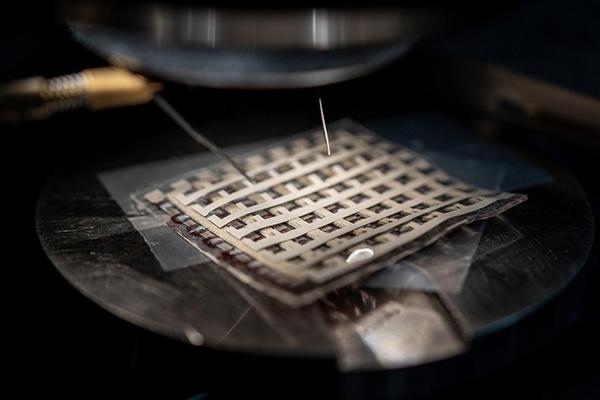Read the latest news about research conducted by investigators in the College of Earth and Mineral Sciences. Our faculty and students are continually advancing technology, creating solutions and expanding knowledge with new and innovative research.
News
Srinivas Chokkakula, Ministry of Jal Shakti Research Chair with the Centre for Policy Research in New Delhi, will give the talk “Conflicts and Complicit Climate Change: Transboundary Water Governance in South Asia” as part of the Department of Geography’s Coffee Hour lecture series.
Soft, elastic semiconductors and circuits could advance wearable medical devices and other emerging technologies, but the high-performance electronics are difficult and expensive to manufacture.
A small percentage of land and coastal waters provides most of the global population with the ecosystem services needed to support human well-being, and maintaining these areas can advance the United Nations’ development, climate and biodiversity conservation goals, according to an international team of researchers.
A team of researchers at Penn State is investigating how contaminants in power plant water cycles affect the integrity of steel pipes and tubing in power generation systems.
Penn State’s Center for Critical Minerals has developed a new purification process that extracts mixed rare earth oxides from acid mine drainage and associated sludges at purities of 88.5%
Tapping into abandoned oil and gas wells in Pennsylvania, products of the state’s long history of energy extraction — could provide a future source of affordable geothermal energy, according to Penn State scientists.
Two Penn State researchers received a $1.5 million grant from the National Science Foundation through the Belmont Forum to study actual and perceived impacts of land abandonment on the sustainability of soil and water resources.
A new study may fill in gaps in understanding public perception toward prescribed burns in the U.S. Mid-Atlantic, where these fires are increasingly used, according to scientists.
A recently released set of topography maps provides new evidence for an ancient northern ocean on Mars.
Jenn Baka, associate professor of geography at Penn State, received a National Science Foundation Faculty Early Career Development Program (CAREER) Award to examine a new cracker plant’s impact on humans’ relationship to the environment and environmental policymaking.












